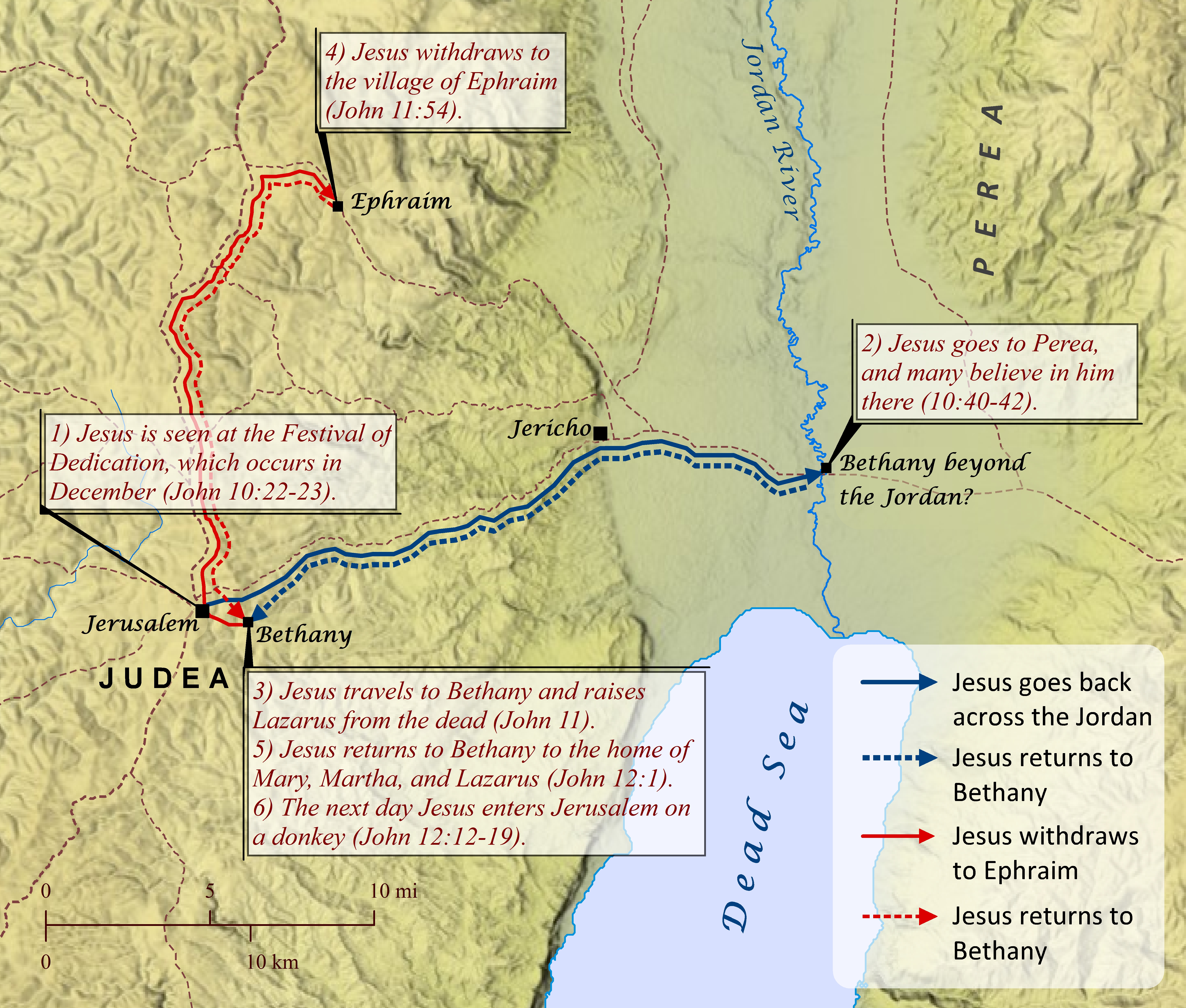Note: This view shows ‘verses’ which are not natural language units and hence sometimes only part of a sentence will be visible—click on any Bible version abbreviation down the left-hand side to see the verse in more of its context. Normally the OET discourages the reading of individual ‘verses’, but this view is only designed as a tool for doing comparisons of different translations—the older translations are further down the page (so you can read up from the bottom to trace the English translation history). The OET segments on this page are still very early looks into the unfinished texts of the Open English Translation of the Bible—please double-check these texts in advance before using in public.
AICNT So the Jews said, “See how he loved him!”
OEB ‘How he must have loved him!’ the people exclaimed;
WEBBE The Jews therefore said, “See how much affection he had for him!”
WMBB The Judeans therefore said, “See how much affection he had for him!”
NET Thus the people who had come to mourn said, “Look how much he loved him!”
LSV The Jews, therefore, said, “Behold, how He was cherishing him!”
FBV “See how much he loved him,” the Jews said.
TCNT So the Jews said, “See how he loved him!”
T4T Then some of the Jews said, “Look how much he loved Lazarus!”
LEB So the Jews were saying, “See how he loved him!”
BBE So the Jews said, See how dear he was to him!
Moff Whereupon the Jews said, "See how he loved him!" —
Wymth "See how dear he held him," said the Jews.
ASV The Jews therefore said, Behold how he loved him!
DRA The Jews therefore said: Behold how he loved him.
YLT The Jews, therefore, said, 'Lo, how he was loving him!'
Drby The Jews therefore said, Behold how he loved him!
RV The Jews therefore said, Behold how he loved him!
SLT Then said the Jews, See how he loved him!
Wbstr Then said the Jews, Behold how he loved him!
KJB-1769 Then said the Jews, Behold how he loved him!
KJB-1611 Then said the Iewes, Behold, how he loued him.
(Modernised spelling is same as from KJB-1769 above, apart from punctuation)
Bshps Then sayde the Iewes: Beholde howe he loued hym.
(Modernised spelling is same as from KJB-1769 above, apart from punctuation)
Gnva Then saide the Iewes, Beholde, how he loued him.
(Then said the Yews, Behold, how he loved him. )
Cvdl Then sayde ye Iewes: Beholde how he loued him.
(Then said ye/you_all Yews: Behold how he loved him.)
TNT Then sayde the Iewes: Beholde howe he loved him.
(Then said the Yews: Behold how he loved him. )
Wycl Lo! hou he louede hym.
(Lo! how he loved him.)
Luth Da sprachen die Juden: Siehe, wie hat er ihn so liebgehabt!
(So said the Yuden: See/Look, as/like has he him/it so kind/sweet/deargehabt!)
ClVg Dixerunt ergo Judæi: Ecce quomodo amabat eum.
(They_said therefore Jews: Behold how amabat him. )
UGNT ἔλεγον οὖν οἱ Ἰουδαῖοι, ἴδε, πῶς ἐφίλει αὐτόν!
(elegon oun hoi Youdaioi, ide, pōs efilei auton!)
SBL-GNT ἔλεγον οὖν οἱ Ἰουδαῖοι· Ἴδε πῶς ἐφίλει αὐτόν.
(elegon oun hoi Youdaioi; Ide pōs efilei auton.)
RP-GNT Ἔλεγον οὖν οἱ Ἰουδαῖοι, Ἴδε πῶς ἐφίλει αὐτόν.
(Elegon oun hoi Youdaioi, Ide pōs efilei auton.)
TC-GNT Ἔλεγον οὖν οἱ Ἰουδαῖοι, Ἴδε πῶς ἐφίλει αὐτόν.
(Elegon oun hoi Youdaioi, Ide pōs efilei auton. )
Key for above GNTs: yellow:punctuation differs (from our SR-GNT base).
BMM BibleMapper.com Maps:

Jesus’ Final Journey to Jerusalem
Much like the difficulties of discerning the Israelites’ journey to the Promised Land (see here), the task of reconciling the four Gospel accounts of Jesus’ final journey to Jerusalem into one coherent itinerary has proven very challenging for Bible scholars. As with many other events during Jesus’ ministry, the accounts of Matthew, Mark, and Luke (often referred to as the Synoptic Gospels) present a noticeably similar account of Jesus’ final travels, while John’s Gospel presents an itinerary that is markedly different from the others. In general, the Synoptic Gospels present Jesus as making a single journey to Jerusalem, beginning in Capernaum (Luke 9:51), passing through Perea (Matthew 19:1-2; Mark 10:1) and Jericho (Matthew 20:29-34; Mark 10:46-52; Luke 18:35-19:10), and ending at Bethany and Bethphage, where he enters Jerusalem riding on a donkey (Matthew 21:1-11; Mark 11:1-11; Luke 19:28-44). John, on the other hand, mentions several trips to Jerusalem by Jesus (John 2:13-17; 5:1-15; 7:1-13; 10:22-23), followed by a trip to Perea across the Jordan River (John 10:40-42), a return to Bethany where he raises Lazarus from the dead (John 11), a withdrawal to the village of Ephraim for a few months (John 11:54), and a return trip to Bethany, where he then enters Jerusalem riding on a donkey (John 12:1-19). The differences between the Synoptics’ and John’s accounts are noteworthy, but they are not irreconcilable. The Synoptics, after noting that Jesus began his trip at Capernaum, likely condensed their accounts (as occurs elsewhere in the Gospels) to omit Jesus’ initial arrival in Jerusalem and appearance at the Festival of Dedication, thus picking up with Jesus in Perea (stage 2 of John’s itinerary). Then all the Gospels recount Jesus’ trip (back) to Bethany and Jerusalem, passing through Jericho along the way. Likewise, the Synoptics must have simply omitted the few months Jesus spent in Ephraim to escape the Jewish leaders (stage 4 of John’s itinerary) and rejoined John’s account where Jesus is preparing to enter Jerusalem on a donkey.
